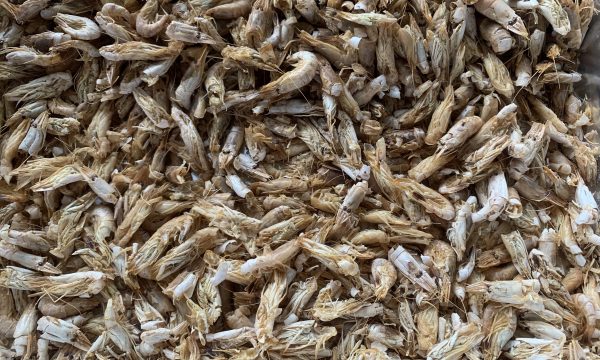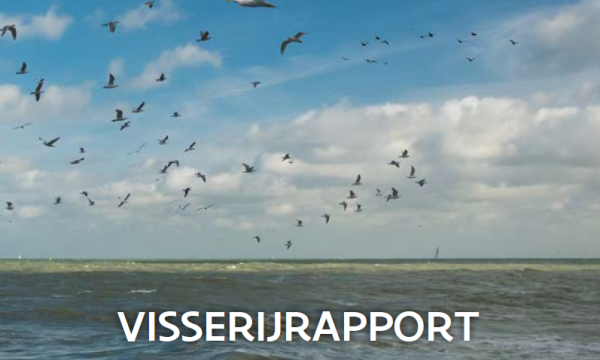Press release Scientists unravel part of the complex mechanism of formation of skin ulcers in flatfish

In the period 2011-2014, many flatfish showed skin ulcers, an alarming sign of disturbance for which no explanation could be given at that time. Thanks to innovation and multidisciplinary research, there are now indications that these skin ulcers are caused by a combination of circumstances. "Various factors can cause injuries, which in turn can cause pathogens such as Vibrio tapetis and Aeromonas salmonicida to 'enter' easily and cause infection. The severity of the infection in turn depends on many fish related and environmental factors that can affect the fish's immune system," explains ILVO-UGent-VLIZ researcher Maaike Vercauteren.
She draws these conclusions from a combination of field observations, samples and infection tests. For even more in-depth research into the interactions between pathogens, fish and their environment, the researcher also developed a valuable in vitro model, a good alternative to tests with live fish.
On 22 June 2020, Maaike Vercauteren defended her doctorate "Unravelling the etiology of skin ulcerations in common dab (Limanda limanda) in the Belgian part of the North Sea".
Promotors are Prof. Dr. Koen Chiers and Prof. Dr. Annemie Decostere of UGent (Faculty of Veterinary Medicine), Ir. Lisa Devriese of VLIZ and Prof. Dr. Johan Aerts of UGent (Stress physiology research group) and ILVO.
Various factors can cause injuries, which in turn can cause pathogens such as Vibrio tapetis and Aeromonas salmonicida to 'enter' easily and cause infection
Alarm signal from the North Sea
Flatfish such as sole, plaice, turbot and dab are key species in Belgian fisheries and in the North Sea ecosystem. In order to ensure that the populations of these fish are fished sustainably, scientists closely monitor the size and age structure of the population, as well as the occurrence of diseases in these fish. One of the health parameters in disease monitoring is the prevention of skin ulcers. These can be caused by an imbalance between pathogenic bacteria, the health of the fish and changes in the environment and are therefore 'snitches' for disturbances in the system. Such a disturbance was picked up during monitoring in the Belgian part of the North Sea: between 2011 and 2014, a sudden and inexplicable increase in skin ulcers was observed in the dab population (Limanda limanda). Maaike Vercauteren, a researcher at UGent, ILVO and VLIZ, went in search of the exact cause of that increase. Using infection tests, an innovative in vitro model and field observations, she studied the concurrence of circumstances that could cause the outbreak.
Looking for a cause
The research started with a first exploratory study in the Belgian part of the North Sea to study the lesions and to collect the first indications of factors that might be involved in their origin. On affected fish, several lesions with skin ulcers were found and carefully examined. In these ulcers two bacterial species were isolated several times, namely Vibrio tapetis and Aeromonas salmonicida. The first causes "brown ring disease" in bivalves such as mussels and oysters. Although this bacterium was occasionally found in captive fish in recent years, it was the first time it was found in a wild-caught marine fish species. Aeromonas salmonicida is a known pathogen in fish. However, the type found in the dabs showed an A-layer not previously described. That A-layer protects the bacteria while it infects the dab's tissues and can therefore enhance its pathogenic capacity.
The start of an infection
In order to find out how the bacteria can break or bypass the skin barrier Maaike Vercauteren carried out an investigation with fish (in vivo): fish were either infected or not with the bacteria on both their colored top and the white underside, and in some fish small wounds were inflicted beforehand. They were then followed up for 21 days studying mortality, clinical signs and the development of skin ulcers. The most severe consequences were observed after infection with Vibrio tapetis: several fish died four days after infection. Fish that were infected with the bacterium developed worse skin ulcers than fish that were not infected. Moreover, most skin ulcers were found at the site where the skin was previously damaged, suggesting that skin damage is an important factor contributing to the development of skin ulcers.
Infection with A. salmonicida appeared to have slightly milder effects; no mortality was observed until 12 days after infection, after which mortality slowly increased. Again, most ulcers developed in the area where the skin had been removed, again indicating an important role of an intact skin barrier to protect against bacterial invasion and development of skin ulcers.
How does skin damage occur in the sea? And what role does the marine environment play?
In order to investigate possible factors contributing to the development of skin ulcers, bimonthly monitoring campaigns were carried out at eight fixed sampling points in the Belgian part of the North Sea (2016-2019). Again, the bacterium species Vibrio was found to be the most abundant in dab skin ulcers. The repeated isolation of Vibrio bacteria from these lesions seems to indicate a role in the formation of skin ulcers.
The affected fish had one to five ulcers, mainly on the white underside. Larger fish and fish with a less good general condition were more likely to develop a skin ulcer. The information on the environment, i.e. seawater temperature, salinity, soil composition, acidity, turbidity of seawater, fish population density, pollution and intensity of fishing activities, shows a positive correlation with the presence of skin ulcers. This means that at higher temperatures and acidity of the water, more fish with skin ulcers were found. Higher fishing intensity also appeared to be related to more skin ulcers. We can assume that since dab is a common bycatch species that is often discarded after being caught, it is possible that it is injured during the catching process. If the fish then reenter the water, this injury can develop into a skin ulcer. However, in order to prove these assumptions, controlled experiments are needed.
How do fish, bacteria and environment influence each other? New technology must allow for deeper research.
The formation of skin ulcers is thus a combination of circumstances, but they influence each other and change continuously. For further research it is therefore necessary to be able to cast pathogens, fish characteristics and environmental factors in a single model. Maaike Vercauteren therefore developed the innovative in vitro 'two-chamber skin explant model'. Pieces of skin are kept and examined in a controlled laboratory environment. This is no sinecure, because the skin must continue to function as if it were still attached to the fish. However, the tested setup proved successful: after one day in the model, the skin did not show any major differences with a control skin. Minimal differences were observed in the tissue structure of the skin, the number of cell layers, and a number of specific cell types (e.g. mucosal cells). There were no unwanted growing or dying skin cells; only the epidermis appeared to thicken (to a limited extent). The developed model is seen as a comprehensive and valuable in vitro alternative for experiments with live fish, and offers opportunities for further, in-depth research into the causes of skin ulcers.
Looking back in time: the search for an explanation for a large number of skin ulcers in 2011-2014
With the results of this study new insights can be gained on the sudden increase in the incidence of skin ulcers in North Sea fish in the period 2011 - 2014. Maaike Vercauteren: "Based on our observations and experiments we now have a number of possible explanations, but of course these are only hypotheses and need to be investigated in more detail. We look at possible changes in the distribution of the bacteria, which may be linked to global warming and changes in the habitat of the host species. But changes in fishing techniques (pulse and beam trawling), fishing intensity, and global warming (temperature increase, acidification, etc.) could also provide possible explanations "What is certain is that skin ulcers have a multifactorial etiology: they originate from a combination of conditions, with influences from bacteria, the fish themselves and the environment in which they swim. These factors can have a direct or indirect effect on the development of skin ulcers. What it certainly also teaches us is that such changes can happen suddenly, and that emphasizes the importance of monitoring these (and other) diseases in our Belgian part of the North Sea. Since 1985, ILVO has been carrying out regular monitoring campaigns that follow up these injuries and a number of other fish diseases over time. Only by doing so can researchers collect data and, if necessary, set up additional research'.
Fish with ulcers on our dinner plate?
To be clear: fish with ulcers do not enter the commercial circuit. Because of these large lesions on the skin of the fish (and therefore also in the fillet) they are not suitable for consumption. Moreover, these lesions occur mainly in dab, a species with less economic value compared to sole and plaice. Why other flatfish species appear to be less sensitive to the development of such skin ulcers is still unclear. It is possible that these specific bacteria (subspecies) can only infect dab. Further research will have to provide more clarity on this issue.


